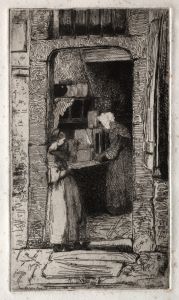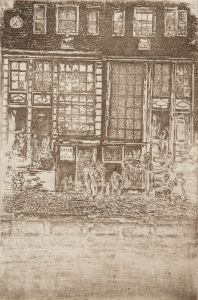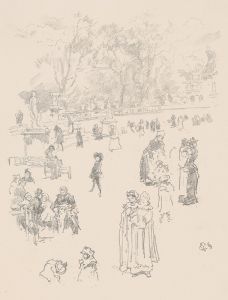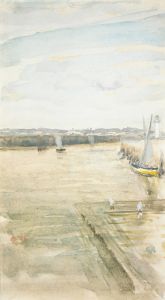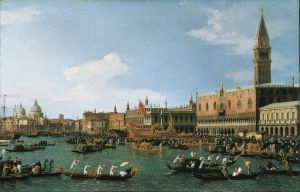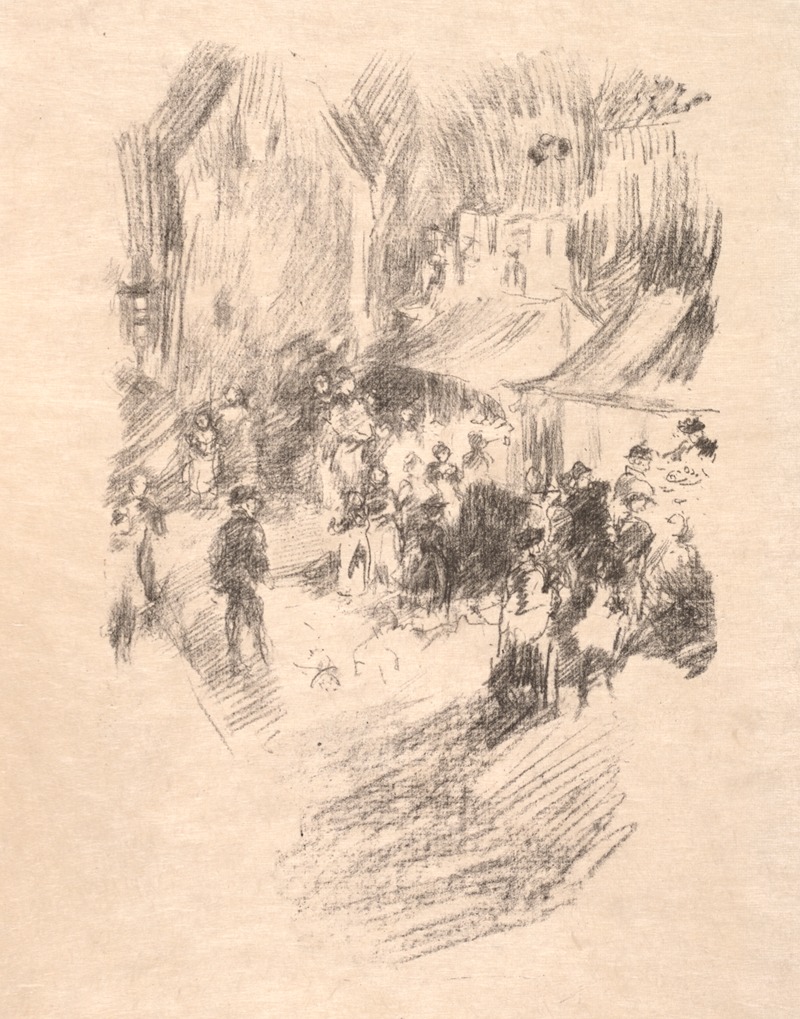
Fair, Lyme, -Regis
A hand-painted replica of James Abbott McNeill Whistler’s masterpiece Fair, Lyme, -Regis, meticulously crafted by professional artists to capture the true essence of the original. Each piece is created with museum-quality canvas and rare mineral pigments, carefully painted by experienced artists with delicate brushstrokes and rich, layered colors to perfectly recreate the texture of the original artwork. Unlike machine-printed reproductions, this hand-painted version brings the painting to life, infused with the artist’s emotions and skill in every stroke. Whether for personal collection or home decoration, it instantly elevates the artistic atmosphere of any space.
James Abbott McNeill Whistler (1834-1903) was an American artist known for his paintings, etchings, and lithographs. He was a leading figure in the Aesthetic Movement, which emphasized the importance of beauty and the visual and sensual qualities of art and design over practical, moral, or narrative considerations. Whistler's work is characterized by his innovative use of color and his interest in the harmonious arrangement of tones.
One of Whistler's lesser-known works is "Fair, Lyme Regis." This painting captures a scene in the coastal town of Lyme Regis, located in Dorset, England. Lyme Regis is known for its picturesque landscapes and historical significance, making it a popular subject for artists. Whistler's depiction of the town is a testament to his ability to convey atmosphere and mood through his distinctive style.
"Fair, Lyme Regis" showcases Whistler's mastery of color and composition. The painting features a fairground scene with various stalls and tents set up along the coastline. The use of muted tones and soft brushstrokes creates a sense of tranquility and nostalgia, evoking the leisurely pace of life in a small seaside town. Whistler's attention to detail is evident in the careful rendering of the figures and the subtle play of light and shadow.
Whistler's approach to painting was heavily influenced by his belief in "art for art's sake," a principle that prioritized aesthetic beauty over narrative content. This philosophy is reflected in "Fair, Lyme Regis," where the focus is on the visual harmony of the scene rather than any specific story or message. The painting invites viewers to appreciate the simple beauty of everyday life and the serene charm of the coastal setting.
Throughout his career, Whistler was known for his innovative techniques and his willingness to experiment with different mediums. In addition to his paintings, he produced a significant body of work in etching and lithography, further demonstrating his versatility as an artist. His contributions to the art world were recognized during his lifetime, and he remains an influential figure in the history of art.
"Fair, Lyme Regis" is a fine example of Whistler's ability to capture the essence of a place through his unique artistic vision. The painting exemplifies his skill in creating mood and atmosphere, as well as his commitment to the principles of the Aesthetic Movement. Today, Whistler's work continues to be celebrated for its beauty and its impact on the development of modern art.
In summary, "Fair, Lyme Regis" by James Abbott McNeill Whistler is a painting that reflects the artist's dedication to aesthetic beauty and his talent for capturing the serene charm of a coastal town. Through his use of color, composition, and attention to detail, Whistler creates a harmonious and evocative scene that invites viewers to appreciate the simple pleasures of life.








